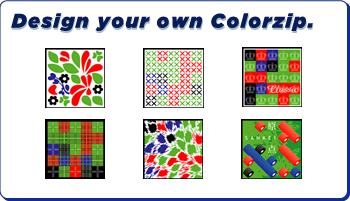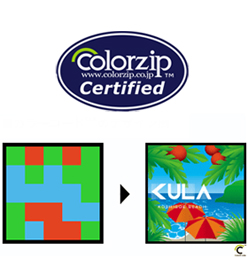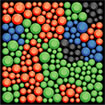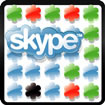
Loyal customers, who are less likely to shop online, can be enticed by QR codes to come into the store after they have scanned a code and experienced rich videos, images, or in-store contests. Recently luxury retailer Ralph Lauren matched up with Red Fish Media to design a custom QR code placed in windows at various Ralph Lauren locations. Once scanned, the customer was enticed to enter the store for a chance to win tickets to the 2012 men’s US Open finals and a $3,000 Ralph Lauren wardrobe. Image Credit: Ralph Lauren
The Automating QR (Quick Response) Code, Smart Phones, And You
A cellphone with a camera isn’t a communications device with a way to capture pictures and share them with friends … rather, it’s a web enabled handheld data scanner with a display which automates the way to reach out, get information, be involved socially, and get things done.
In order to have one's phone behave more like a tool than a personalized toy, all one has to do is download a simple program into the cellphone and presto – the camera takes a picture (scans) of a symbol printed on a billboard, flyer, magazine, or TV/Computer display screen then decodes it and has the phone access a “(dot) mobi” webpage on the internet through a series of pre-scripted commands. Quick, Simple, and Easy.
 Image Credit: Ralph Lauren
Image Credit: Ralph LaurenSo why hasn’t this form of consumer automation taken off in the larger way it has in Japan and other countries? Hard to say, but get ready because the symbology revolution will be vying for your attention at a cellphone, real estate operation, bus stop, television screen, website, or specialty retail store around the corner from where you live, right now ... it's that weird square with squares in it.
There may be many codes (symbologies) offered by program automation developers, each with their own strengths and benefits, however, if your phone has limited memory space in which to store the software necessary to decode the symbology, then the one code program the cellphone should contain is the QR Code … the best code ever.
 Image Credit: Ralph Lauren
Image Credit: Ralph LaurenThis excerpted and edited from Multichannel Merchant Magazine -
R U Ready 4 QR Codes?
By Tim Parry, Multichannel Merchant
CONSIDERING MOBILE MARKETING? Then you should probably start thinking about quick response (QR) codes. These two-dimensional barcodes can provide a vital link between print or broadcast media and mobile commerce.
----
WHAT ARE THEY? QR codes store information — namely mobile Website URLs — that can be read by devices with cameras, like cell phones. A user with a Web-enabled camera phone equipped with the QR reader software can scan the image of the QR code; decoding software reads the information and prompts the phone's browser to go to a programmed URL.
WHAT'S THE BENEFIT TO YOU? Let's say you have a QR code printed on an advertisement or catalog. A customer could scan it with his cell phone to be directed to your mobile site — and hopefully start buying immediately.
IS ANYBODY USING THEM? Upscale apparel brand Ralph Lauren, for instance, burst onto the mobile commerce scene in August using the technology. The merchant put QR codes on print advertisements, store windows and mailers so that with one wave of a Web-enabled camera phone — with QR reader software — the user is whisked away to a landing page at m.ralphlauren.com.
The mobile site was initially launched back in 2008 with a showcase of its limited edition U.S. Open Collection and other Ralph Lauren classics such as polo shirts, oxfords and chinos. Mobile users could also check out a Ralph Lauren style guide, watch tennis videos, and read articles about the U.S. Open in real time.
“We see mobile as a key channel for marketing, advertising and commerce for all of our brands and retail concepts,” says Miki Berardelli, Ralph Lauren's vice president, global customer strategy and retail marketing. “QR codes are part of the strategy and they serve as a conduit, providing an easy way for people to access the mobile Web.”
Users can download the QR reader application for free from Ralph Lauren; the technology is also available from numerous other sources online.
David Harper, founder/CEO of Website development firm Engagelogic and mobile content management and social networking software company Winksite, hopes the Ralph Lauren launch will encourage others to incorporate QR codes in their mobile commerce campaigns. But the early adaptors like Ralph Lauren may need to do more to educate people about the technology.
----
Why aren't more using QR codes? Creating a basic QR code is easy enough: Multichannel Merchant generated the code that appears on this issue's cover in a matter on minutes on Winksite.com. (Test it with your cell phone camera.)
Dave Sikora, CEO of m-commerce provider Digby, blames a lack of consumer awareness of the technology, and the inability of phones to accurately read the codes.
----
But Harper contends that adding a QR code reader application to a phone is no harder than downloading software to your personal computer. You can do a search for “QR code reader” on your mobile browser and find a site you want to download it from. Once installed, the reader application will show up in the applications folder, and its icon will appear on the screen.
And the QR reader does not have to point perfectly perpendicular for the QR code to be correctly translated by the mobile device, he adds. Even a wave over the code can bring the user to the correct mobile site.
----
Big in Japan
QR codes can be seen everywhere in Japan — no surprise, since Japanese firm Denso-Wave created the technology in 1994. Cell phone users in Japan can click a QR code printed on a poster at a movie theater and view its trailer.
It helps that QR code readers come as a standard feature on many smart cell phones.
----
“When a customer scans the barcode with their phone, it launches a mobile-ready product detail and ordering page,” says Nina Matthews, marketing coordinator for CBC America. “This enables the customer to grab the page for follow-up while on the go or for sharing with others.”
----
Once consumers embrace the technology, Harper envisions some merchants using QR codes on the covers of their catalogs. Eventually, they may generate individual codes to be used for each product offering.
Technology notwithstanding, Digby's Sikora wonders how some merchants would handle the creative elements of incorporating a QR code into their print advertising and catalogs.
[Reference Here]
 Image Credit: Ralph Lauren
Image Credit: Ralph LaurenFAQ's from Ralph Lauren -
Frequently Asked Questions (very basic)
What is a mobile site?
A mobile site is simply a normal web site formatted to fit your mobile phone or device.
Is it necessary to download anything to shop the mobile site?
No. Just enter m.RalphLauren.com into your mobile phone browser and voila...
Can any phone access the mobile site?
Any phone equipped with a web browser can access m.RalphLauren.com.
Will it cost me on my phone bill to use the mobile site?
This service is free from Ralph Lauren but charges from your carrier may apply. Be sure and double-check your plan.
Is it secure to shop from my phone?
Yes. Shopping via mobile device is just as safe as shopping from your home computer.
----
What is a QR code?
These are two-dimensional bar codes—just like you’d find at the grocery store—that direct you to a specific website when you scan them with your cell phone.
[Reference Here]
** Article first published as The Automating QR (Quick Response) Code, Smart Phones, And You at Technorati **











